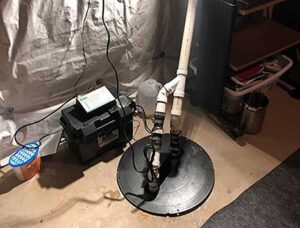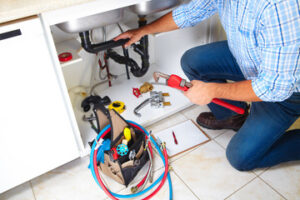Flooring Fairfield NJ is a huge design element that can drastically impact the look of a room. Beyond that, it’s essential to consider a floor’s functionality as well.

For example, some flooring materials are better for mitigating sound from downstairs neighbors, while others are warmer underfoot than tile or concrete. The type of flooring material you choose also impacts your health.
Hardwood floors provide a warm and inviting touch to any room. They are versatile and complement many styles of decor, from traditional to modern. Hardwood flooring is also eco-friendly and adds resale value to your home.
Hard wood floors are crafted from real, natural wood and create a classic look that will never go out of style. Hardwood planks are typically installed perpendicular to wooden support beams, known as joists or bearers. Both solid hardwood and engineered wood offer natural grain patterns and textures that complement any design style.
Solid wood is thicker than engineered hardwood, and can be sanded and refinished multiple times. However, it’s more susceptible to moisture and isn’t recommended for use in bathrooms or laundry rooms. Engineered hardwood has a layer of plywood that resists swelling and warping, making it a better choice for humid locations.
The color and texture of hardwood can be customized with different stain colors to match your décor. There are a variety of texture options as well, from smooth to rustic.
If you’re installing new hardwood flooring, be sure to allow for an acclimation period before using it. It takes time for the wood to adjust to the humidity in your home. When you’re ready to get started, a 50Floor professional can visit your home to show you samples and help you find the perfect floor for your space.
Tile
Tile flooring offers a wide variety of styles, patterns and textures that can enhance the aesthetics of any home. Unlike carpeting or wood, tiles are highly resistant to moisture and staining, making them a great choice for kitchens and bathrooms. They’re also easy to clean, which reduces the need for harsh chemicals or cleaning products.
In addition, tile can mimic the look of natural materials, such as wood or stone, allowing homeowners to create a more unique style. They also come in a range of colors, from bright white marble to dark matte slate. Moreover, tiles are not limited to traditional square or rectangular shapes; hexagonal and octagonal tile options allow homeowners to create more complex patterns and layouts.
Many families with young children and pets prefer tile flooring, as it’s easier to keep clean than most other types of flooring. It also provides a comfortable surface underfoot, and can help prevent the spread of germs and allergies in homes with kids and animals.
However, due to its low thermal conductivity, tile floors may feel cold in the winter and can lead to higher energy costs for heating and cooling. To mitigate this, homeowners can choose textured or slip-resistant tile options, install area rugs, or use underfloor heating systems. Adding a layer of quality insulation can also help reduce these costs.
Vinyl
Vinyl is one of the most versatile flooring materials available. It is highly durable and easy to maintain, making it a popular choice for high traffic areas. It is also relatively inexpensive and comes in a wide variety of designs.
Vinyl comes in sheet or plank form and is made of a combination of materials, most importantly PVC (polyvinyl chloride). It includes plasticizers to make it flexible and soft to the touch, as well as pigments that set its base tone.
When properly cared for, this flooring material can last up to 20 years. It is resistant to water and spills, so it’s perfect for bathrooms and kitchens. It can also withstand heavy foot traffic. It’s important to wipe up any water spills quickly and place felt pads under furniture legs to prevent scratches.
It’s also a great option for those who are looking to brighten up a dark room with the look of natural wood or stone tiles. It is a good alternative to hardwood, especially in spaces that can get damp and humid.
Luxury vinyl is also available in a wide range of patterns and colors, making it easy to find the perfect match for any design. It’s also a great choice for those who want to minimize their impact on the environment. Most of MSI’s luxury vinyl products are certified with FloorScore, GreenGuard Gold, and LEED, which means they produce very few volatile organic compounds and other chemicals that can affect indoor air quality.
Carpet
Carpet has been a popular choice among homeowners for decades due to its softness and comfort underfoot. It is also an excellent insulator and helps reduce noise levels in the home. Carpet is available in a wide range of colors and styles to fit any design aesthetic.
Carpet can be made from a variety of fibers, including wool, acrylic, nylon and polyester (called PET). Nylon is the most stain-resistant option, especially when treated with post-production stain protection. This is the preferred carpet fiber for high-traffic areas and homes with children and pets.
Wool is a natural fiber that produces a luxurious carpet with an excellent feel and a unique texture. This type of carpet is ideal for formal rooms and offers superior durability. Acrylic is an inexpensive alternative to wool. It can be dyed in a variety of colors but is prone to pilling and soiling. Polyester is an eco-friendly fiber and can be produced in spun or filament constructions. It can be dyed in a wide variety of colors but is prone to flattening and is easily crushed or matted.
Although many people are shifting away from carpeting, it has some great benefits. It offers better traction than smooth materials and can minimize slips and falls, particularly for seniors and youngsters. It also provides a softer landing for those who do fall, and it is much warmer than tile or wood floors in colder climates.
Concrete
Concrete is a structural material that can be poured as part of new construction or laid as a flooring surface over an existing slab. Traditionally, it was left exposed and rough, but today a variety of treatments can make it suitable for flooring. Concrete floors can be honed (treated with progressively finer abrasives) for a smooth, glass-smooth finish that can then be polished or buffed to a shiny shine. They can also be stained, dyed, or acid-stained to create a mottled marble-like appearance that will be unique to each floor. Concrete floors can also be overlaid with a decorative overlay for a fresh, updated look.
Concrete floors are extremely durable and hard to damage. They can withstand heavy foot traffic and can withstand most dropped objects. Unlike carpet, they don’t absorb moisture and can be sealed with low or zero VOC products to prevent water penetration, mold growth and mildew. They are also environmentally friendly, as they don’t deplete natural resources and require less energy to produce than other floors.
However, concrete is hard and cold and can be uncomfortable for people who stand on it for long periods of time. It can also be abrasive to feet and backs, and it is not recommended for homes with young children or elderly people. It is also prone to hairline cracks over time and requires resealing regularly. A concrete floor can also generate a lot of noise and may be susceptible to cracking due to changes in humidity.
Natural Stone
Stone flooring is a beautiful, unique, and durable option for any space. It adds a premium quality that increases the value of your home. Stone floors are not affected by changing trends and last for decades.
The wide variety of natural stones available gives you the freedom to select a style that aligns with your vision. From the sleek and modern ambiance of granite to the cozy feel of tumbled travertine, there’s something for every style.
Because of its porous nature, most types of natural stone must be sealed after installation. This prevents stains and keeps the surface clean. This can be a time-consuming process and is a consideration for some homeowners.
Stone tiles offer a high level of durability and are a great choice for areas with heavy foot traffic. They can withstand the wear and tear of families with children and pets. They also provide good traction and are less slippery than other tile options.
Stone floor tiles are easy to maintain and care for. With a little bit of regular upkeep, they will stay looking their best for years to come. They are also a more environmentally-friendly option than manufactured alternatives because they do not require frequent replacement and recycling. Stones recycle natural heat from the sun to help lower energy costs. In addition, they absorb and trap air moisture to keep indoor environments comfortable and healthy.

